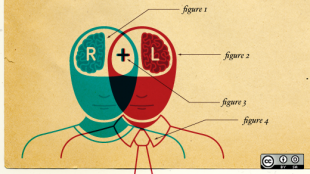4 Reasons eLearning is Perfect for Building Creative Skills


It seems counterintuitive at first glance: learning marketing and creative skills like copywriting or graphic design online? Don't those skills need an in-person teacher?
Not only is that not the case—it can actually be the opposite. Marketing and creative proficiency are actually perfect skills to acquire in an elearning environment. Here’s why:
1. You control the speed of learning.
In a traditional classroom, the course speed is controlled solely by the instructor. If you ask the instructor for more time, you may hold up the entire class' progress. Such an environment discourages students from seeking clarification that would further their own understanding of the topic. This is particularly true when teaching creative skills, such as design, photography, marketing or writing to name a few. A ticking clock does not really promote imagination and creativity.
In the online environment provided by elearning courses, you can learn at your own pace, stopping to revisit more challenging concepts as needed. This is especially helpful when learning a skill such as Photoshop or InDesign. Some aspects of these complicated programs may come easily, but others may require a bit more practice. eLearning allows you to take that practice time and enhance your overall understanding, with no ticking clock.
2. You choose your learning style.
Preferred learning styles vary from student to student. While most educators will attest to this statement, not many are able to differentiate their lessons in order to satisfy several learning styles. As a result, the vast majority of in-person classes are still geared toward a lecture format—one person talks and you listen.
Creative skills are often closely tied to an individual's learning style, which means education formats must be varied in order to be effective. With elearning, you can adapt courses to your own learning style. Whether you prefer to take notes, focus on videos, focus on just audio or pause sessions for practice and application, you're free to learn in the exact mode and method that works best for you.
This flexibility works well for more complicated marketing concepts like Google Adwords and search engine optimization. Both of these are crucial to the modern marketer's arsenal, but are both fairly sophisticated skills that require an in-depth understanding.
Forcing someone to learn in a way that isn't intuitive to them only slows down the process; whereas allowing them to learn in a way they prefer helps to increase both understanding and retention.
3. You get to practice in private.
One of the most intimidating elements of learning a new skill is having to demonstrate your level of mastery in public. In a traditional classroom, a teacher can call on you at random, forcing you to participate and provide a “demonstration” whether you are comfortable or not.
eLearning empowers the learner to determine when and how to implement what they learn. If you find picking up a skill in a course fairly quickly, you may opt to begin using it before the course is even over.
On the other hand, if you would prefer more practice, you can opt to implement it only when you've completed the course—or even after you've gone through the course a few times.
A skill like copywriting (writing for marketing or advertising) is a perfect example of this scenario. While there are basic fundamentals and tactics students will learn, it can take a bit of synthesizing and practicing to be able those strategies to write good copy.
A student who might not be ready when a teacher called on him or her in class could turn out to be a masterful copywriter if allowed to practice and implement the techniques on their own schedule.
4. You can deep-dive at will.
When teachers control the pace, they also control the content. This means that if a student wants to take time from the main course to identify and research real-world examples to help cement their learning…they can’t.
In an elearning environment, however, being able to do this is easier than ever. All a student has to do is pause the course and then open a new tab on their browser to begin searching for how new concepts have been applied. Even better, spellings, names and references are right there within the elearning course for a student to reference.
Learning social media marketing in a classroom might be useful, but it’s very much practiced in the real world on a second-to-second basis. Any new concepts tpresented in an elearning course are constantly being tested and proven in new ways on the web. Easy access to these examples helps students better understand concepts, as well as come up with new, exciting and interesting ways to implement them..
Traditional classroom learning has dominated education for hundreds of years. However, just as marketing and creative concepts and skills have evolved, the way that students learn them has to evolve, too.
Nicki Krawczyk is a copywriter, copy coach and founder of FilthyRichWriter.com, an online resource for new and aspiring copywriters. Her copywriting course is available on OpenSesame.com
Image Credit: OpenSource.com via Flickr



